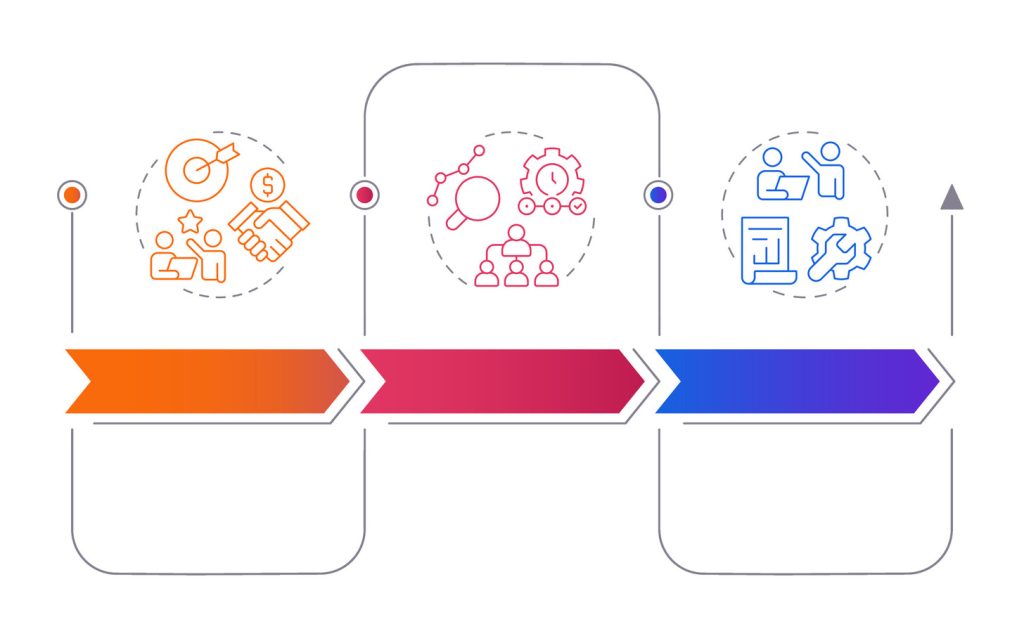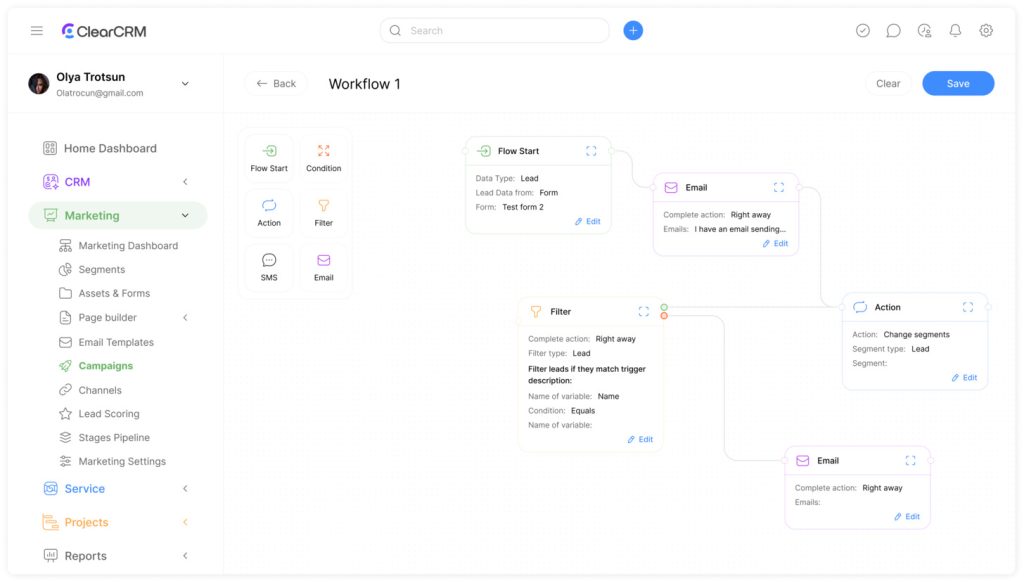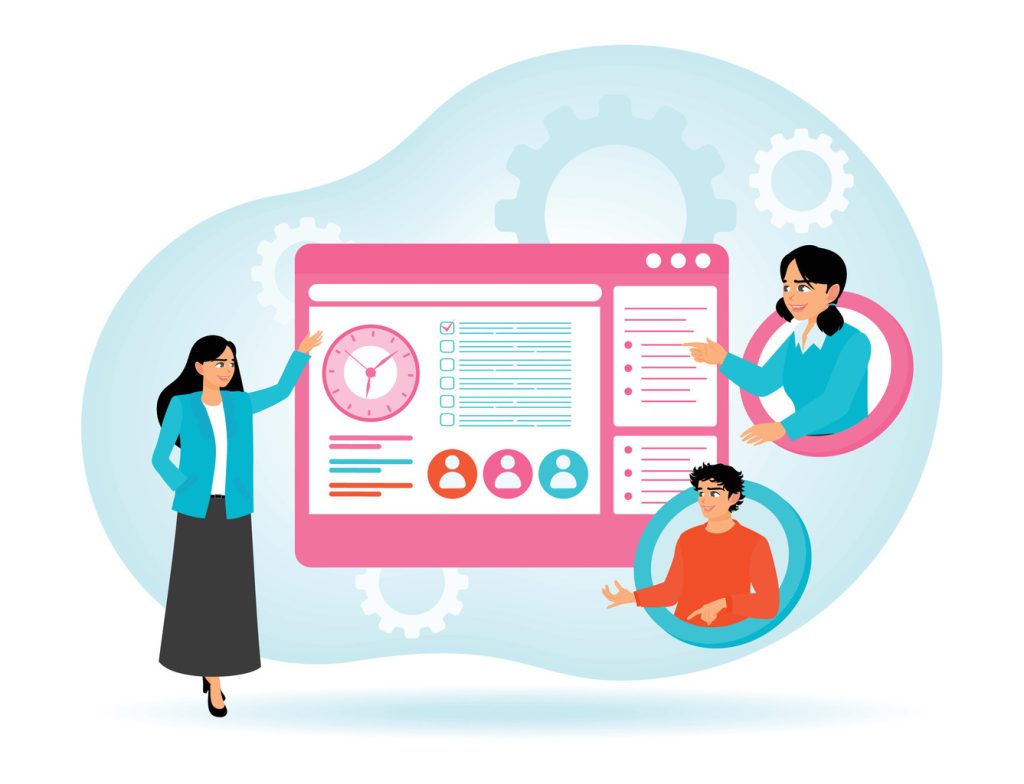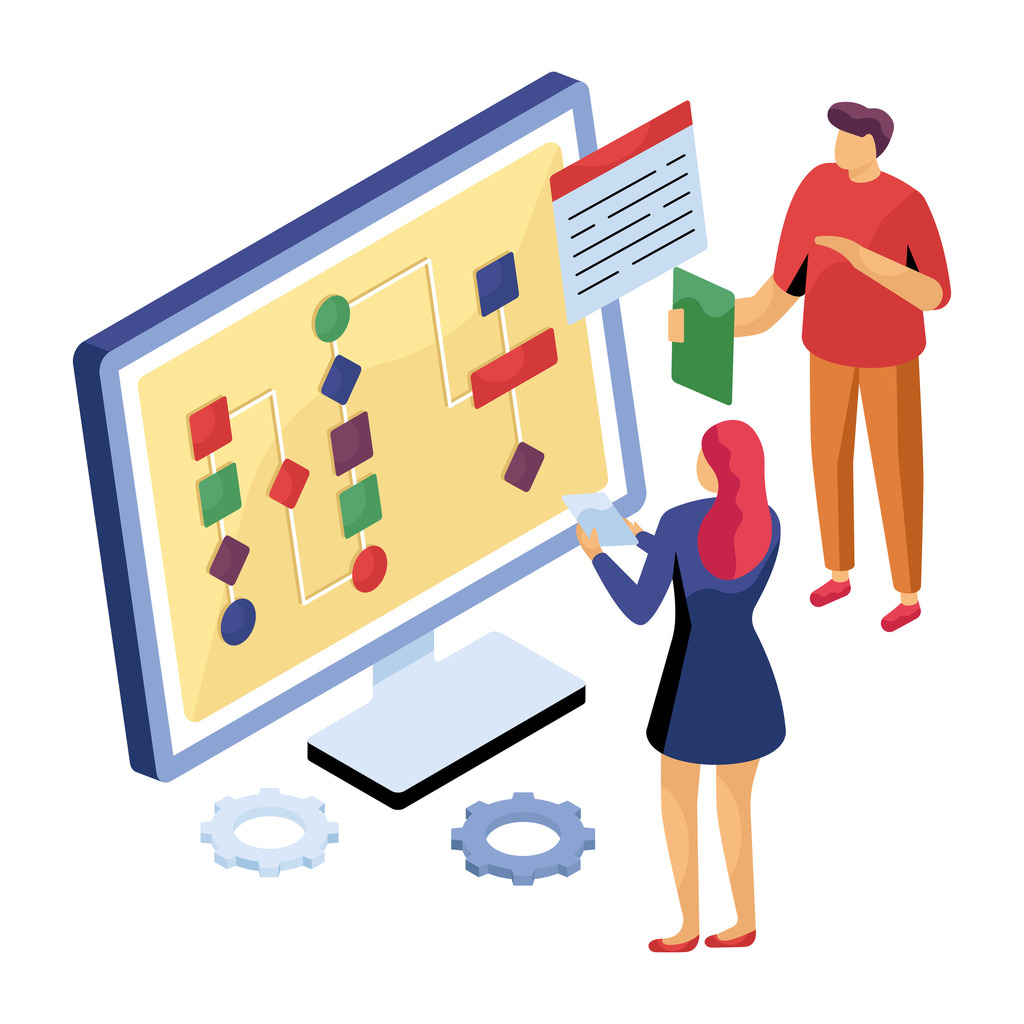Top Workflow Templates for Business Process Optimization

Modern organizations face mounting pressure to streamline operations and eliminate costly inefficiencies. Structured frameworks have become essential tools for aligning teams, accelerating project timelines, and maintaining competitive agility. Leading platforms now offer ready-to-use solutions that transform chaotic workflows into organized systems.
Miro’s process design resources support over 80 million users worldwide, demonstrating the growing demand for visual collaboration tools. Their collection spans specialized areas like API development pipelines, customer journey mapping, and project management flowcharts. These pre-built systems enable teams to standardize critical operations while retaining flexibility for unique business needs.
Companies adopting these frameworks report measurable improvements in task completion rates and cross-department coordination. The infinite canvas features allow both high-level strategy visualization and granular process adjustments. This dual focus helps organizations balance immediate execution with long-term scalability.
Key Takeaways
- Pre-built frameworks reduce setup time for critical business operations
- Visual collaboration tools enhance team alignment across departments
- Scalable templates support both detailed planning and big-picture strategy
- API development and customer journey mapping require specialized systems
- Standardized processes improve project completion rates by 40-60%
- Flexible canvases adapt to evolving business requirements
Understanding Workflow Templates and Their Impact
In today’s fast-paced corporate landscape, structured systems bridge the gap between chaotic task management and measurable results. These predefined frameworks act as operational guardrails, guiding teams through complex activities with precision.
Defining the Blueprint Approach
Workflow templates serve as repeatable models for recurring tasks, from client onboarding to inventory audits. They outline action sequences, decision trees, and approval pathways—eliminating redundant planning. For example, a customer service escalation process might auto-route urgent tickets to senior staff after specific triggers.
This method transforms abstract ideas into executable steps. Teams spend 68% less time debating “how” to approach tasks when using standardized systems, according to recent operations research.
Operational Transformation Tactics
Adopting these models creates ripple effects across organizations. Departments synchronize efforts through shared procedures, while new hires achieve productivity 40% faster. Error rates drop as checklists replace memory-based execution.
One logistics company slashed shipping delays by 55% after implementing warehouse process templates. Their structure allowed real-time adjustments during peak seasons without compromising quality controls. Such adaptability proves critical when scaling across regions or product lines.
These frameworks don’t stifle creativity—they channel energy toward innovation rather than process reinvention. Businesses maintain consistency while allocating resources to high-impact improvements.
The Benefits of Using Workflow Templates

Organizations across industries discover transformative advantages through pre-built systems that reshape daily operations. These frameworks create predictable rhythms in complex environments while freeing teams to focus on strategic priorities.
Improved Efficiency and Standardization
Ready-made structures slash setup time by 75% compared to manual process design. Teams adopt proven models that bake industry best practices into every task sequence. A manufacturing firm reduced equipment inspection errors by 62% after implementing standardized checklists across all facilities.
| Metric | Before Implementation | After Implementation |
|---|---|---|
| Task Setup Time | 8.5 hours | 2.1 hours |
| Cross-Department Alignment | 42% | 89% |
| Error Rate | 18% | 6% |
Enhanced Team Collaboration
Shared visual interfaces eliminate communication silos. Real-time editing features let multiple contributors refine processes simultaneously. Marketing teams at a Fortune 500 company accelerated campaign launches by 33% using collaborative process maps.
Transparency increases when all stakeholders see task dependencies and progress indicators. Automated notifications keep teams synchronized without endless status meetings. This approach turns individual efforts into coordinated execution.
Exploring Popular Workflow Template Options
Businesses now leverage specialized frameworks to tackle both technical challenges and customer experience gaps. These systems address distinct operational needs while maintaining adaptability across industries.
Templates for API Development and BPM
API development frameworks give software teams clear roadmaps for building integrations. They standardize coding practices, testing protocols, and deployment checkpoints. One fintech company reduced API errors by 48% using pre-built coding guidelines and version control systems.
Business Process Management (BPM) models excel at eliminating redundant steps. A healthcare provider streamlined patient intake by 37% using drag-and-drop process designers. These systems highlight bottlenecks while preserving compliance standards.
User Flows and Customer Journey Mapping
Digital teams rely on user flow diagrams to predict customer behavior. E-commerce platforms use these visual tools to reduce cart abandonment—one retailer boosted conversions by 22% after redesigning checkout paths.
Journey mapping packs reveal critical touchpoints across sales cycles. “Seeing the entire customer experience visually changed how we allocate resources,” notes a SaaS company’s CX director. Their team identified three understaffed support stages needing immediate attention.
- Production models automate manufacturing quality checks
- Hiring frameworks standardize interview scoring across locations
- Value stream maps align cross-departmental handoffs
How Workflow Templates Streamline Project Management

Effective project execution requires clear roadmaps that balance strategic vision with actionable details. Modern frameworks provide dynamic tools to align teams, track deliverables, and adapt to shifting priorities without losing momentum.
Visualizing Success with Process Mapping
Project management systems transform abstract goals into visual action plans. Infinite canvas features let teams map multi-phase initiatives while maintaining granular control over individual steps. A construction firm reduced planning errors by 51% after adopting visual mapping tools, identifying material shortages before ground-breaking.
Task Coordination and Progress Tracking
Breaking initiatives into assigned work units prevents overload and missed deadlines. Standardized structures define dependencies between tasks, creating natural accountability checkpoints. Marketing agencies using these models report 29% faster campaign launches through real-time progress updates.
| Metric | Traditional Methods | Framework Approach |
|---|---|---|
| Planning Time | 14 hours/week | 3.5 hours/week |
| Milestone Adherence | 67% | 92% |
| Task Completion Rate | 71% | 94% |
Real-time dashboards give stakeholders instant visibility into bottlenecks. Teams adjust resource allocation when progress metrics highlight delays in critical paths. This dual focus on strategy and execution turns complex projects into achievable sequences.
Customizing Your Workflow Template for Specific Needs
Adapting standardized systems to unique operational requirements separates thriving businesses from stagnant ones. Pre-built frameworks become powerful tools when modified to address specific challenges and departmental nuances.
Steps to Tailor a Template
Begin by selecting base models that mirror 60-70% of your team’s needs. Preview structures to identify unnecessary components before making edits. Most platforms allow drag-and-drop adjustments for:
- Adding compliance checkpoints
- Removing redundant approval layers
- Inserting department-specific quality controls
| Customization Step | Typical Impact |
|---|---|
| Role Assignment | 35% faster task ownership |
| Progress Tracking Add-ons | 42% fewer missed deadlines |
| Conditional Logic Setup | 58% reduction in manual reviews |
Using Built-In Collaboration Tools
Modern systems shine when multiple stakeholders co-edit processes simultaneously. Real-time cursors and color-coded contributions prevent version conflicts. A retail chain improved inventory audits by 27% using:
- @mentions for urgent task assignments
- Comment threads resolving process gaps
- History tracking for accountability
| Feature | Team Benefit |
|---|---|
| Live Editing | 63% faster revisions |
| Permission Tiers | 91% security compliance |
| Activity Feeds | 78% context retention |
Successful customization maintains core efficiencies while addressing unique operational needs. Teams preserve consistency across locations while adapting to regional regulations or client demands.
Workflow Templates: Revolutionizing Business Process Efficiency

Operational excellence demands tools that convert strategic visions into repeatable actions. Modern frameworks bridge this gap by combining standardized procedures with adaptive features, creating systems where consistency meets innovation.
Core Components of High-Performance Systems
Automated task routing eliminates manual handoffs between teams, reducing delays by 34% in cross-department projects. Real-time status updates give managers instant visibility into bottlenecks, while integrated approval chains maintain compliance without paperwork.
Analytics dashboards reveal patterns across business processes, helping teams optimize recurring tasks. One logistics provider cut fuel costs by 19% after identifying inefficient delivery routes through template-generated reports.
Unified Digital Ecosystems
Seamless software integration transforms standalone tools into coordinated platforms. API-enabled frameworks connect CRM systems with project management apps, syncing customer data across departments. This interoperability reduces duplicate entries by 57% in typical sales pipelines.
| Integration Type | Efficiency Gain |
|---|---|
| ERP Connectivity | 41% faster invoicing |
| Cloud Storage Links | 63% document retrieval time |
Financial institutions using these connected systems process loan applications 28% faster. Standardized data protocols ensure compliance while allowing regional teams to adapt workflows to local regulations.
Deep Dive into End-to-End Project Overviews
Complex projects demand systems that reveal both strategic objectives and tactical details. Advanced visualization tools now enable teams to chart every phase of multi-layered initiatives while maintaining flexibility for adjustments.
Mapping the Entire Process
End-to-end project mapping creates living diagrams that evolve with initiatives. These visual guides capture dependencies, resource allocations, and risk factors across all stages. For example, a tech startup reduced product launch delays by 31% after identifying conflicting deadlines in their development timeline.
Comprehensive overviews help teams:
- Anticipate bottlenecks before they disrupt timelines
- Align cross-functional efforts through shared visual references
- Balance immediate priorities with long-term goals
One construction firm used infinite canvas tools to map a $20M facility project. The system revealed an understaffed permitting phase needing immediate attention. Real-time adjustments prevented a potential 6-week delay.
| Aspect | Traditional Planning | End-to-End Mapping |
|---|---|---|
| Risk Identification | 38% detected | 89% detected |
| Stakeholder Alignment | 52% | 94% |
These frameworks turn reactive firefighting into proactive strategy. Teams maintain focus on deliverables while adapting to changing market conditions or resource constraints.
Advanced Customization: Lessons from Slack and Beyond

Leading platforms now empower teams to tailor complex processes through intuitive design tools. These systems balance standardization with adaptability, letting organizations mold pre-built frameworks to their exact operational DNA. Slack’s Workflow Builder exemplifies this trend, offering granular control over multi-stage processes without coding expertise.
Customizing Advanced Systems
Slack’s environment allows users to modify existing structures through drag-and-drop simplicity. Teams can:
- Reorder action sequences with visual prompts
- Insert conditional logic for dynamic approvals
- Assign role-based access using member tiers
A financial services firm reduced compliance review time by 41% after adding automated checkpoints to their client onboarding model. The system preserved core security protocols while accommodating regional regulations.
Editing and Publishing Process Steps
Modifying individual components maintains structural integrity during updates. Teams edit steps through inline tools like pencil icons, then validate changes through simulated runs. Publishing involves:
| Action | Purpose |
|---|---|
| Naming Conventions | Ensure searchability across departments |
| Manager Assignments | Establish clear ownership |
| Permission Sets | Control data access levels |
Paid plans unlock version history and enterprise-grade security features. These safeguards prevent unauthorized edits while tracking every adjustment for audit purposes.
Standardizing Processes with Structured Workflow Templates
Inconsistent methods plague businesses, but structured solutions offer a clear path forward. Companies adopting predefined systems report fewer operational gaps and faster scaling. These frameworks turn scattered efforts into cohesive strategies that withstand personnel changes and market shifts.
Benefits of a Predefined Structure
Standardized processes eliminate guesswork across teams. A logistics provider reduced shipping errors by 58% after implementing uniform quality checks. “Structured systems became our operational playbook,” notes their COO. “New hires now grasp complex procedures in days, not weeks.”
Prebuilt formats embed industry expertise into daily operations. Financial institutions using these models cut compliance audit time by 37% through automated documentation trails. The approach ensures critical steps aren’t overlooked during rapid scaling.
Consistency extends beyond individual projects. Marketing agencies using repeatable structures maintain brand voice across campaigns despite team turnover. Training time drops 44% when employees follow visual guides instead of memorizing protocols.
| Standardization Factor | Performance Improvement |
|---|---|
| Error Reduction | 52% average |
| Training Acceleration | 41% faster |
| Compliance Adherence | 79% success rate |
These systems also simplify cross-department collaboration. Shared formats let sales and product teams align priorities using the same visual language. Real-time updates keep everyone focused on measurable outcomes rather than procedural debates.
Integrating Workflow Templates with Modern Software

Businesses achieve peak operational harmony when their tools communicate seamlessly. Connecting structured systems with existing platforms transforms isolated apps into synchronized engines. This fusion eliminates manual data transfers while maintaining consistency across departments.
Seamless Integration Techniques
API connections act as digital bridges between platforms. Teams sync customer data from CRMs like customer management systems with project trackers automatically. Cloud synchronization ensures real-time updates across inventory databases and sales dashboards.
| Integration Method | Implementation Time | Efficiency Gain |
|---|---|---|
| API Connections | 2-4 hours | 73% faster data flow |
| Cloud Sync | 1 hour | 88% error reduction |
| Automated Alerts | 30 minutes | 65% fewer missed deadlines |
Real-Time Collaboration Advantages
Shared digital workspaces let teams edit documents simultaneously. A logistics company reduced email chains by 49% using live annotation tools. Version control prevents conflicting changes during multi-user edits.
Notifications keep remote teams aligned without constant check-ins. Marketing departments using these features launch campaigns 31% faster. Unified platforms turn fragmented efforts into coordinated action.
Real-Life Success Stories and Case Studies
Measurable results from global enterprises prove structured systems drive operational excellence. Companies achieve faster alignment and measurable growth through strategic implementation of pre-built frameworks.
Enterprise Transformations in Action
A national retail chain reduced product launch cycles by 38% using visual collaboration tools. Their team coordination improved through real-time editing features, cutting email approvals by 62%. “The system became our single source of truth,” notes their operations director.
Software developers at a mid-sized tech firm accelerated client project delivery by 41% after adopting standardized coding protocols. Error rates dropped 29% through automated quality checks embedded in their development process.
- Healthcare provider reduced patient intake errors by 33%
- Manufacturer boosted equipment uptime 27% with maintenance checklists
- Marketing agency increased campaign output by 55% annually
Expert-Approved Implementation Strategies
Industry leaders emphasize gradual adoption for lasting effectiveness improvement. “Start with one high-impact process before scaling,” advises a McKinsey operations consultant. Successful teams combine training with iterative refinements based on performance data.
“Quarterly reviews of our task management systems help maintain relevance as business needs evolve.”
Proven tactics include:
- Monthly cross-department alignment sessions
- Automated progress tracking for critical projects
- Role-specific dashboards showing key metrics
Conclusion
Structured operational systems have transitioned from optional tools to essential components of modern business strategy. These frameworks deliver measurable improvements in cross-team coordination and resource allocation, with early adopters reporting 40-60% faster project completion rates.
Organizations achieve peak performance when combining standardized procedures with adaptive features. Real-world results show error reductions up to 62% and productivity gains exceeding 55% in customer-facing operations. The true value emerges when teams modify base models to address unique challenges while preserving core efficiencies.
As digital transformation accelerates, scalable solutions prove critical for maintaining competitive agility. Companies investing in visual collaboration tools and automated processes position themselves to adapt swiftly to market shifts. This strategic approach turns operational consistency into sustained growth across industries.
Business leaders now face a clear choice: perpetuate outdated methods or embrace systems that convert strategic vision into repeatable success. The path forward lies in balancing structured guidance with the flexibility to innovate.

